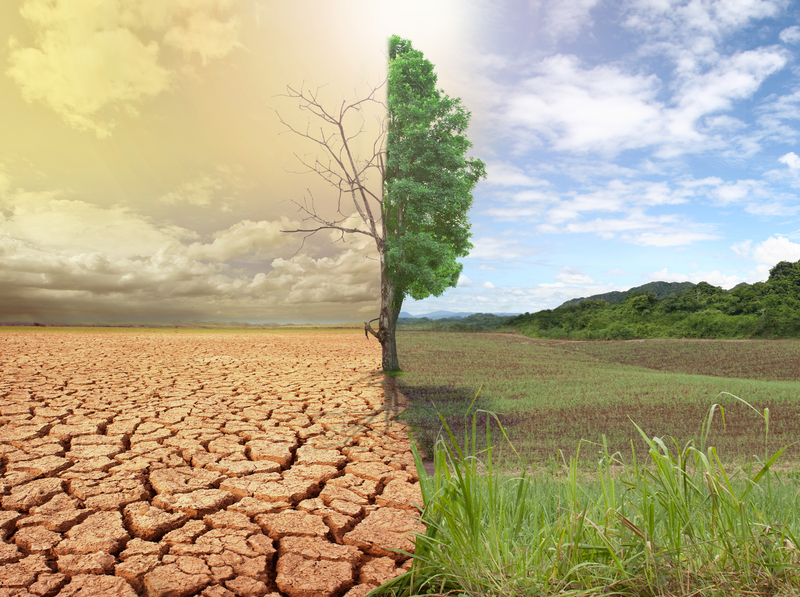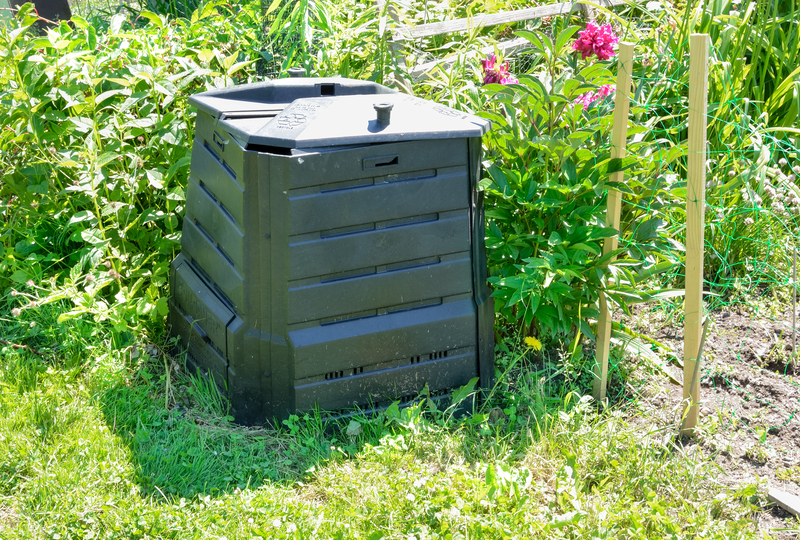Key Indicators of Hazardous Waste: What to Watch For
Hazardous waste poses a substantial threat to public health and the environment if not handled properly. Identifying the key indicators of hazardous waste is critical for individuals, businesses, and environmental professionals to ensure compliance with regulations and to protect human safety. In this comprehensive article, you'll discover the essential signs and characteristics that distinguish hazardous waste from ordinary waste, why correct identification matters, and the steps you should take if you uncover potential hazards.

Understanding Hazardous Waste: An Overview
Hazardous waste refers to any material, whether solid, liquid, or contained gas, that demonstrates properties which can make it dangerous or potentially harmful to human health or the environment. Recognizing the signs of dangerous waste is the first step in prevention and safe management.
- Sources: Industries, hospitals, laboratories, households.
- Types: Chemical, biological, radioactive, and electronic wastes.
- Regulations: Governed by local, national, and international guidelines - with the Resource Conservation and Recovery Act (RCRA) being a key tool in the United States.
Beyond legal requirements, correctly identifying hazardous waste can prevent environmental disasters, costly fines, and health emergencies.
The Different Categories of Hazardous Waste Indicators
There isn't a single sign that marks all hazardous wastes. Instead, waste is identified by a combination of characteristics and listed substances determined by environmental agencies. The principal guidelines used to differentiate dangerous waste include:
- Ignitability: Does the material catch fire easily?
- Corrosivity: Is it capable of corroding metals or destroying living tissue?
- Reactivity: Will it react dangerously with water, air or other substances?
- Toxicity: Does it contain substances harmful to health if ingested or absorbed?
- Persistence and Bioaccumulation: Can it remain in the environment or enter the food chain?
- Specific listings: Is it on any government list of hazardous material?
Ignitability: Flammability Is a Key Hazardous Waste Screener
One of the most visible indicators of hazardous waste is whether it catches fire easily. Wastes considered ignitable typically:
- Have a flash point below 60?C (140?F) (for liquids).
- Are not liquids but can spontaneously combust.
- Yield flammable gases when mixed with water.
- Include oxidizers that amplify combustion.
Examples include:
- Solvents
- Alcohols
- Paint thinners
Why it matters: Improper storage may lead to fire or explosions, threatening everyone nearby.
Corrosivity: The Power to Eat Through Materials
Corrosive wastes are those that can damage or destroy living tissue and metal. Common corrosive wastes:
- Have a pH less than or equal to 2 (highly acidic) or pH greater than or equal to 12.5 (highly alkaline).
- Can corrode steel at a rate of greater than 6.35 mm per year.
*Examples include*, but are not limited to:
- Battery acids
- Caustic cleaners
Reactivity: Instability Can Create Disasters
Reactive wastes are unstable under normal conditions and can cause explosions, toxic fumes, or violent reactions. Watch for materials that:
- Are unstable and readily undergo violet change without detonating
- React violently with water to release toxic gases
- Are capable of detonating or exploding under heat or a shock
*Common reactive waste types:*
- Sodium metal
- Old munitions or fireworks
- Peroxides
Consequence: Severe injuries, death, or environmental devastation from explosions or releases of toxic substances.
Toxicity: Health Impact as a Key Indicator
Toxicity refers to waste that is harmful or fatal when ingested or absorbed, or can leach dangerous substances into the soil or groundwater. Toxic wastes may contain:
- Mercury
- Lead
- Arsenic
- Pesticides
- Solvents
Testing: The Toxicity Characteristic Leaching Procedure (TCLP) is used to determine if a waste is considered toxic under environmental regulations.
Listed vs. Characteristic Hazardous Wastes
Environmental agencies such as the EPA use both characteristics and specific listings to identify hazardous wastes:
- Listed Wastes: Specifically identified by regulatory bodies because of their known dangerous ingredients. These are categorized further into F-list (wastes from common manufacturing processes), K-list (wastes from specific industries), P-list & U-list (discarded commercial chemical products).
- Characteristic Wastes: Identified by exhibiting one or more hazardous properties described above (ignitability, corrosivity, reactivity, toxicity).
Often, hazardous material is both listed and meets one or more characteristic criteria.
Physical and Visual Clues: What to Look for on Site
Physical State: Not All Hazardous Waste Is Liquid
While many people associate hazardous waste with dangerous liquids, it may also be in solid or gaseous form. Examples include:
- Pools of unidentified fluids
- Formerly liquid residues or sludges
- Powders, dusts, or mists
- Pressurized gas cylinders
Color Changes and Odors
- Unusual stains or colors on soil, floors, or containers may indicate the presence of hazardous chemicals.
- Pungent or chemical odors are often a sign of toxic vapors or volatile compounds.
Note: Reliable identification of hazardous substances should never be based on smell alone; many toxic chemicals are odorless, and some dangerous gases can only be detected with specialized equipment.
Condition of Containers and Labels
- Deteriorating drums, tank corrosion, or bulging containers may signal hazardous waste leaking or decomposing.
- Look for hazard symbols, warning labels, or shipping documents on containers--these often provide clues to hazardous contents.
Legal and Regulatory Framework: Why Correct Identification Matters
The proper identification of hazardous waste isn't only good practice--it's the law. Regulatory agencies such as the Environmental Protection Agency (EPA) in the United States and equivalent bodies worldwide require the correct classification, handling, labeling, and disposal of hazardous materials. Failure to comply can result in:
- Hefty fines and cleanup costs
- Legal action and loss of reputation
- Irreversible environmental and health damage
Current regulations often require generators of waste (businesses, laboratories, etc.) to determine whether their waste is hazardous by using generator knowledge, chemical analysis, or both.
Environmental and Health Effects: The Real Dangers of Misidentifying Waste
If left undetected, hazardous waste can:
- Contaminate drinking water through soil and groundwater leaching
- Cause fires, explosions, and toxic gas releases
- Result in chronic illnesses such as cancer, reproductive issues, and neurological problems
- Disrupt wildlife and ecosystems by introducing bioaccumulative toxins
Early recognition of key indicators can save lives and prevent environmental degradation.
Practical Steps: What to Do If You Suspect Hazardous Waste
1. Isolate the Area
- Restrict access to prevent exposure.
- Post warning signs and inform supervisors or safety personnel.
2. Gather Information Safely
- Check for labels, MSDS (Material Safety Data Sheets), shipping documents.
- Observe physical signs--odor, leaks, color changes, damaged containers.
3. Contact Environmental Health and Safety Professionals
- Never attempt to clean up unidentified hazardous material yourself.
- Call in certified hazardous materials response teams for sampling and safe removal.
4. Follow Regulatory Reporting Requirements
- File incident reports as required by local authorities.
- Keep comprehensive records for audits and investigations.
Common Mistakes in Identifying Hazardous Waste
- Assuming household or "everyday" products are not hazardous: Items like batteries, cleaners, and paints can be extremely harmful.
- Reliance on appearance alone: Some of the most dangerous wastes are colorless, odorless, or in inconspicuous containers.
- Poor recordkeeping: Lack of documentation can lead to improper handling.
- Ignoring small quantities: Even minute amounts of certain toxins require careful management.
Best Practices for Businesses and Households
- Handle with care: Always treat unidentified waste as potentially hazardous until proven otherwise.
- Segregate properly: Never mix different waste types--chemical reactions could lead to dangerous incidents.
- Train employees: Regular training on identifying hazardous waste indicators is vital.
- Use proper storage: Resistant containers, regular inspection, and appropriate labeling are mandatory.
- Partner with certified waste disposal firms: Ensure waste leaves your site in full compliance with regulations.

Emerging Trends in Hazardous Waste Detection
Modern technology aids hazardous waste management. New detection and identification methods include:
- Portable chemical analyzers that offer instant analysis at a spill site.
- Smart labels with embedded RFID tags for tracking hazardous shipments.
- Data analytics tools, improving prediction of hazardous waste streams from industrial processes.
- Biological sensors that change color when exposed to specific toxins.
Adopting these solutions streamlines the identification process and minimizes manual errors.
Conclusion: Always Be Aware of Key Indicators
The key indicators of hazardous waste serve as your first line of defense against environmental and health disasters. From physical and chemical characteristics such as ignitability, corrosivity, reactivity, and toxicity, to practical cues like damaged containers and unusual odors, learning what to watch for is every individual's and business's responsibility.
Proper recognition, reporting, and management of hazardous waste not only prevents harm, but also keeps you in compliance with stringent regulations while contributing to a safer community and healthier planet. Remember, when in doubt, always treat unknown waste materials with caution and consult environmental health professionals.
- Stay informed about updated hazardous waste regulations.
- Conduct regular training on the proper disposal and identification of dangerous waste.
- Maintain regular audits of your waste management practices.
By staying vigilant and educated about all types of hazardous waste and their indicators, you can play an active role in environmental protection and workplace safety.